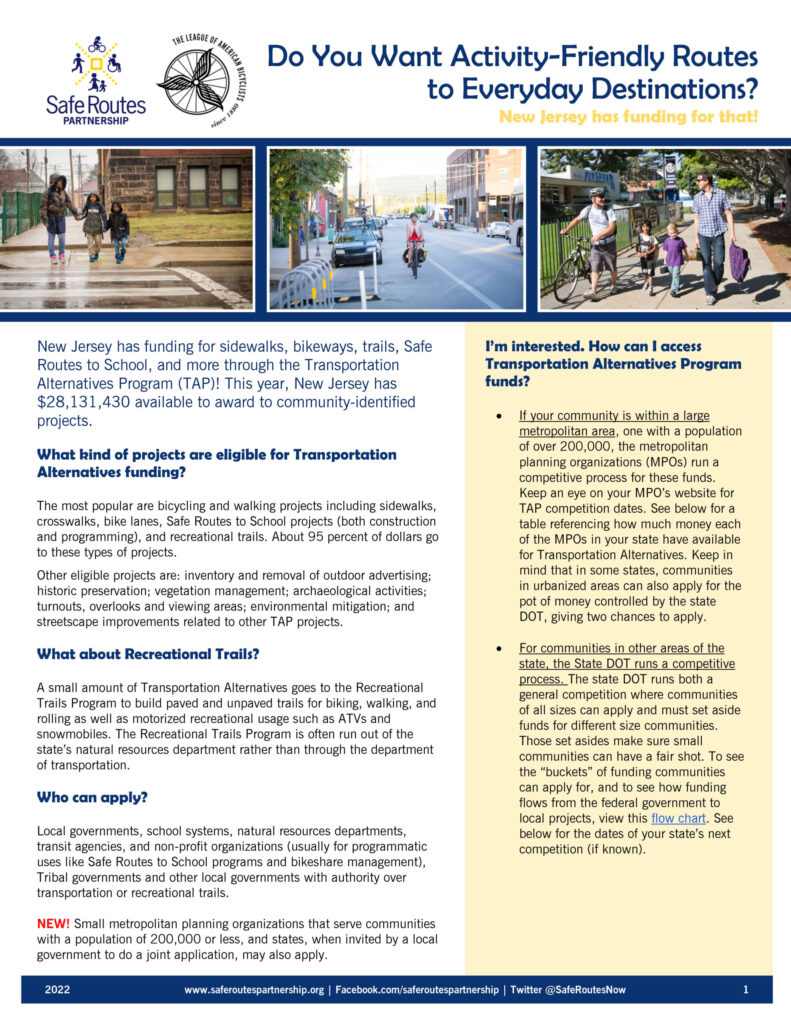New State Transportation Alternatives Funding Fact Sheets
The League of American Bicyclists and the Safe Routes Partnership partnered to review each state’s Transportation Alternatives process and create fact sheets with important data on each state’s process. Please check out our new fact sheets and other resources about accessing federal funds for active transportation.
The Transportation Alternatives Program (TAP) provides roughly $1.3 Billion each year for safety projects throughout the United States. Since its creation in 1991 under the Intermodal Surface Transportation Efficiency Act of 1991 (ISTEA), a version of TAP has been the most common source of federal funds for bicycling and walking projects.
Many communities struggle to compete for TAP funds. The Infrastructure Investment and Jobs Act (IIJA) made two changes that we hope will enable more communities to pursue TAP funds and make improvements for bicycling and walking possible. Each state’s fact sheet highlights these changes and the overall program so that you can understand how to get started accessing this important funding. Thank you to the Safe Routes Partnership for partnering on this initiative and creating these fact sheets.
NEW FACT SHEETS AVAILABLE HERE

TAP requires states to distribute funding through a competitive process and report on the results of that process. Those federal requirements allow us to understand the performance of the program and demand for bicycling and walking projects. In recent years, this data has pointed to high demand that cannot be met by current funding levels, so it was great to see Congress give a nearly 60% increase in funding to TAP in the IIJA.
You can find more information about the Transportation Alternatives Program in our federal funding topic. Most of Transportation Alternatives funding is distributed through each state’s competitive process, but large urban areas with populations of 200,000 or more receive their own allocation of Transportation Alternatives funding. The map below shows the places that received those allocations in fiscal year 2022.